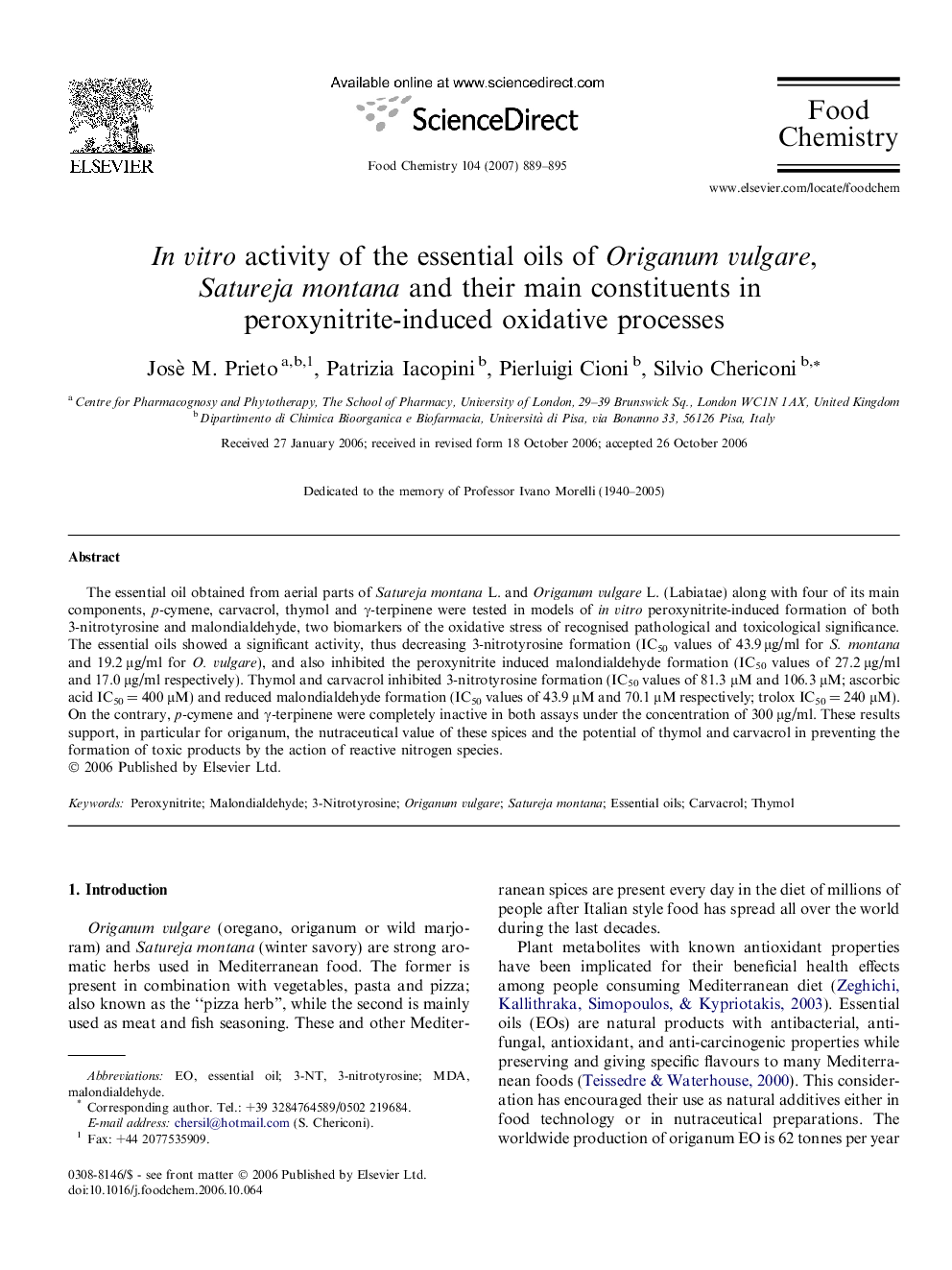| Article ID | Journal | Published Year | Pages | File Type |
|---|---|---|---|---|
| 1189818 | Food Chemistry | 2007 | 7 Pages |
The essential oil obtained from aerial parts of Satureja montana L. and Origanum vulgare L. (Labiatae) along with four of its main components, p-cymene, carvacrol, thymol and γ-terpinene were tested in models of in vitro peroxynitrite-induced formation of both 3-nitrotyrosine and malondialdehyde, two biomarkers of the oxidative stress of recognised pathological and toxicological significance. The essential oils showed a significant activity, thus decreasing 3-nitrotyrosine formation (IC50 values of 43.9 μg/ml for S. montana and 19.2 μg/ml for O. vulgare), and also inhibited the peroxynitrite induced malondialdehyde formation (IC50 values of 27.2 μg/ml and 17.0 μg/ml respectively). Thymol and carvacrol inhibited 3-nitrotyrosine formation (IC50 values of 81.3 μM and 106.3 μM; ascorbic acid IC50 = 400 μM) and reduced malondialdehyde formation (IC50 values of 43.9 μM and 70.1 μM respectively; trolox IC50 = 240 μM). On the contrary, p-cymene and γ-terpinene were completely inactive in both assays under the concentration of 300 μg/ml. These results support, in particular for origanum, the nutraceutical value of these spices and the potential of thymol and carvacrol in preventing the formation of toxic products by the action of reactive nitrogen species.
